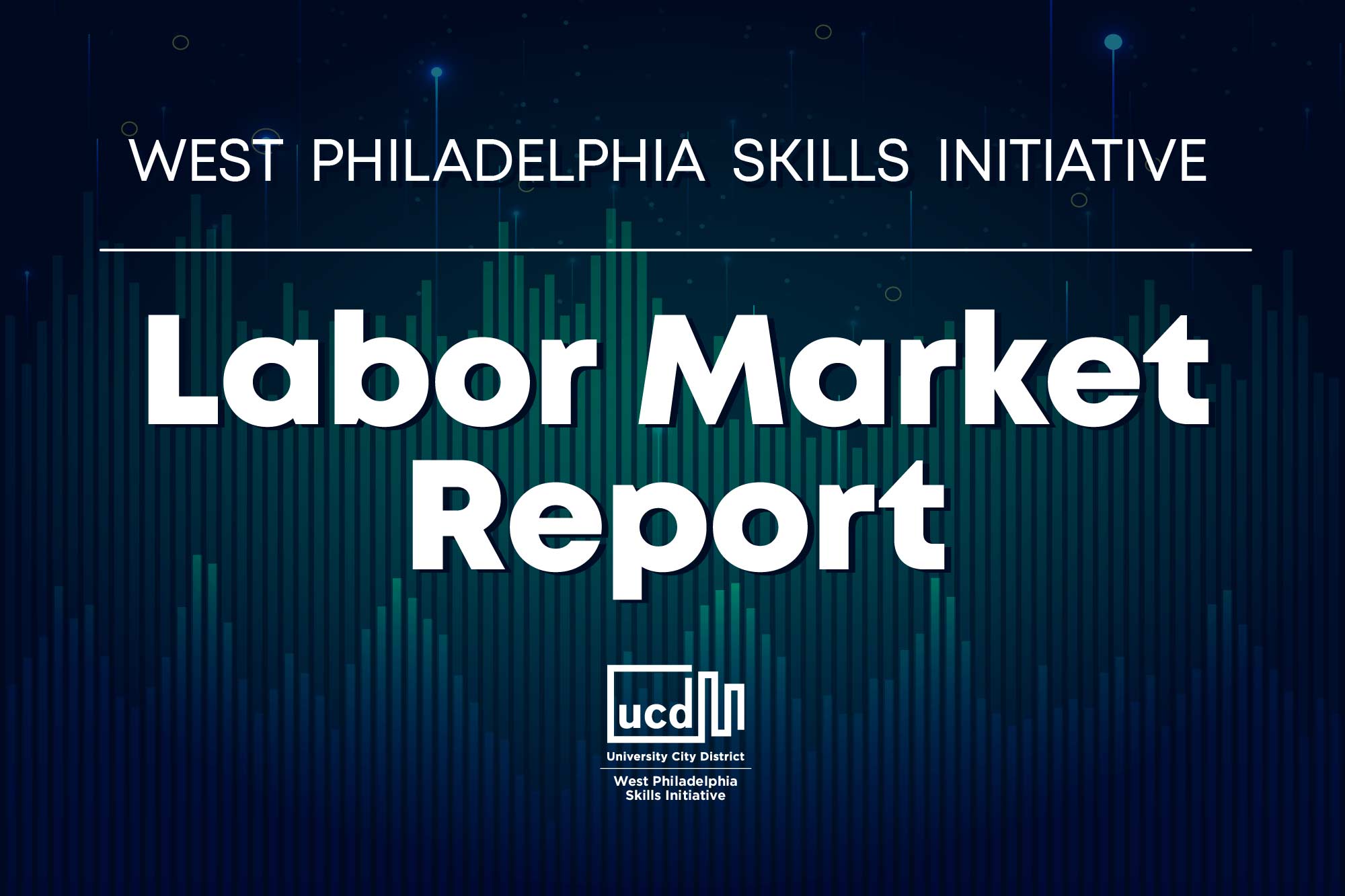Every week, we will be publishing labor market industry (LMI) data and important trends to consider in the development of an equitable economic recovery from the COVID-19 crisis. We are always looking for opportunities to learn, grow, and collaborate. Email wpsi@universitycity.org to learn more.
It has now been over 8 months since the COVID-19 pandemic started to impact the number of jobs being posted in our region. While there are signs of optimism in specific industries, the overall job market remains between 25-30% smaller than it was at the beginning of 2020. Using job postings as a proxy for future demand still leaves us with a murky picture of what is to come. That said, the jobs market seems unlikely to head back to the depths it reached in May of 2020, when postings were down by more than 50%.
As we can see in the chart below, the total number of jobs posted in any week since COVID-19 hit has never reached pre-pandemic levels. The weeks that had the strongest jobs numbers corresponded with major hiring efforts by a few retailers (primarily Amazon), and do not reflect a steady recovery in the jobs market. The highest total postings came in late September, during a week where Amazon alone posted over 1,000 jobs.

This is bad news for the labor market, especially at a time when COVID-19 cases are steadily rising again both in our region and around the country. Uncertainty about additional federal aid continues, and many are predicting an avalanche of evictions once moratoriums expire. While jobs are being posted, many workers are not in a position where they can take them. Parents facing limited childcare options and at-home schooling may choose not to look for work because the costs associated with childcare and education at home exceed the income they would receive from a job. Others may simply be too far from distribution centers, which tend to cluster around highways outside city limits, to justify a long commute by car or public transit. Some may not have access to a car, or a driver’s license. Many people who are at high risk or live with someone who is high risk of contracting or facing complications from COVID-19 do not feel safe going to a job that involves close contact with other people. Many of the jobs being posted in logistics are physically strenuous and require workers to be on their feet, walk miles each shift, and move around heavy items, which may be difficult for some. Finally, the types of jobs workers had pre-pandemic may not be an ideal skills match for the types of jobs being offered now.
While no one organization alone can solve broad labor market imbalances, the West Philadelphia Skills Initiative is working to identify the pockets of growth that align with our standards of job quality, including stability, fair wages, benefits, and safety. We recently launched a partnership with Penn Medicine to recruit and train over 50 Lab Assistants. Notably, applicants do not need to have any specific education beyond a high school diploma or equivalent or even specific lab experience. Participants will be trained by Penn Medicine before starting their job on the specific technical skills they need, opening a valuable opportunity for in-demand work to a much broader pool of individuals. This type of outside-the-box thinking will be needed on a much larger scale as the needs of businesses change and adapt rapidly in the coming year.

About the data: Data is sourced from Burning Glass Technologies Labor Insights, unless otherwise noted, covering job postings in the City of Philadelphia and the Philadelphia Metro Statistical Area (MSA), which is comprised of roughly a circle surrounding Trenton, Philadelphia, King of Prussia, Camden, and Wilmington. This data is then compared to a benchmark week of February 9th – 15th, which was the last week before the economic impact of COVID-19 began to be reflected in job posting data.

